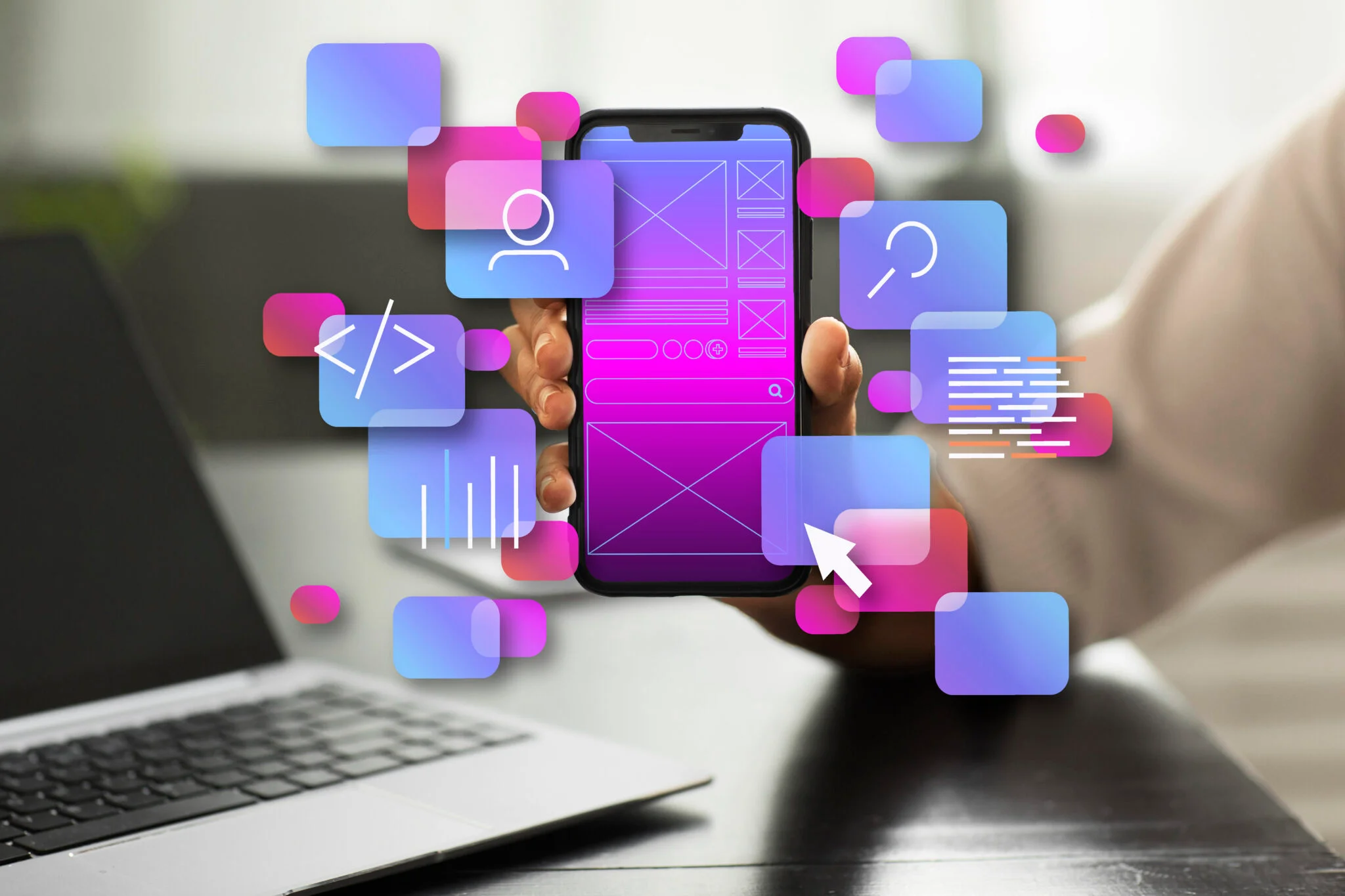How iOS Changed the World of Mobile Computing
One technological advancement in the modern era stands out for having completely changed mobile computing: Apple’s iOS. When iOS was released on June 29, 2007, it fundamentally altered how customers interacted with mobile devices and created the ecosystem for mobile apps. The evolution of iOS, its impact on various businesses, and its future possibilities are all examined in this article.

The Birth of iOS
The groundbreaking idea that Steve Jobs and his colleagues at Apple had is responsible for the creation of iOS. It introduced a user-friendly and intuitive interface without physical keyboards, marking a substantial shift from traditional mobile operating systems. Apple created a new benchmark for mobile computing with iOS.
The Revolution of Touchscreen Devices
Multi-Touch Interface
The multi-touch interface of iOS was one of its most innovative features. It made the overall experience remarkably intuitive and interesting by enabling users to engage with their gadgets using simple movements like pinching, tapping, and swiping.
App Store Introduction
The launch of the App Store in 2008 helped iOS reach new heights. It gave programmers a place to build and share apps, which sparked a wave of innovation. Numerous apps that catered to different needs and interests were developed in this ecosystem.
iOS and Mobile Computing
Seamless User Experience
The user interface of iOS was consistent across all Apple products. Users were able to seamlessly sync data between their iPhone, iPad, and Mac devices thanks to the inclusion of iCloud.
Advancements in Hardware
Apple’s dedication to hardware development was a wonderful match for iOS. Every new iPhone and iPad iteration improves the overall mobile computing experience by bringing better processing speed, display quality, and camera capabilities.
Productivity on the Go
iOS turned mobile devices like smartphones and tablets into essential work tools. Users may manage their activities, plan their schedules, and collaborate on projects while on the go with the help of a wide variety of productivity tools.
Impact on Communication
Messaging and Social Media
Modern communication was significantly shaped by iOS. Bypassing standard SMS fees, the iMessage service allowed iPhone users to transmit messages, images, and videos over Wi-Fi or cellular data. Additionally, iOS smoothly incorporated a variety of social media sites, improving how individuals connected and shared their experiences.
Video and Voice Calls
FaceTime was introduced so iOS users could make crystal-clear video and voice calls over the internet, overcoming distance constraints and bringing close relatives closer.
iOS and Entertainment
Mobile Gaming
By transforming iPhones and iPads into portable game consoles, iOS revolutionized mobile gaming. The enormous selection of games available on the App Store is suited to both casual players and die-hard gamers, revolutionizing how people find pleasure.
Music and Video Streaming
The way people consume music and videos changed with the introduction of iOS. Access to a vast collection of songs and films was made possible by Apple Music and other streaming apps, revolutionizing how users absorbed their favorite media.
iOS and Business
Mobile Commerce
iOS helped to advance mobile commerce. iOS smartphones developed and became the ideal platforms for online shopping thanks to secure payment methods and a user-friendly design, propelling the expansion of the e-commerce sector.
Enterprise Solutions
The effects of iOS were also felt in the business world. Custom iOS apps were used by businesses to manage data, manage customer relationships, and increase employee productivity, all of which increased productivity and innovation.
iOS and Education
E-Learning and Educational Apps
With the introduction of e-learning and educational apps, iOS upended conventional education. Education became more interesting and accessible as a result of students having access to an abundance of learning resources.
Digital Textbooks and Resources
With the use of iOS smartphones, students may now more easily take their course materials everywhere they go in place of bulky backpacks.
Security and Privacy
Biometric Authentication
With Touch ID and Face ID, iOS pioneered biometric authentication, establishing new benchmarks for device security. These technologies offered quick and safe ways to authenticate transactions and unlock gadgets.
App Permissions
To provide users control over their data and protect their privacy, iOS implemented strict app permissions.
iOS and Health
Health and Fitness Apps
iOS has evolved into a tool for fitness and health fanatics. Users could measure their physical activity, sleep habits, and general health through health-tracking applications and gadgets.
Medical Applications
The medical industry saw progress with iOS as well. Specialized apps were used by medical personnel to diagnose patients, arrange treatments, and provide patient care, expediting the healthcare process.
iOS and Accessibility
Assistive Technology
In terms of accessibility, iOS was leading the way. The platform allowed people with disabilities to easily explore and engage with their devices thanks to a variety of assistive technologies.
Inclusive Design
Because of Apple’s dedication to inclusive design, iOS catered to a variety of user needs, making technology available to all.
iOS and Innovation
Augmented Reality (AR)
With iOS, augmented reality became widely accessible. Apple’s augmented reality platform, ARKit, gave programmers the tools to make immersive, interactive experiences that revolutionized a variety of sectors, including gaming, retail, and education.
Artificial Intelligence (AI) Integration
Apple’s virtual assistant Siri served as a symbol for the incorporation of AI into iOS. The user experience was improved by Siri’s natural language comprehension and context-aware answers.
The Future of iOS
There are countless opportunities for iOS in the future. Apple keeps pushing the envelope with every new version, adding features that transform mobile computing. iOS’s future will be shaped by the incorporation of cutting-edge technologies and an emphasis on the user experience.
Evolution of Mobile Computing
Early Mobile Devices
Before the development of smartphones, mobile computing could only do basic tasks like texting and calling. Early mobile devices had poor computer capabilities, were large, and offered very little in the way of user engagement. These gadgets lacked the slick design and simple operation that we now take for granted.
Emergence of iOS
In 2007, Apple revealed the first iPhone, which was a watershed point in the evolution of transportable computing. Apple’s proprietary operating system, iOS, which powers the iPhone, revolutionized user-friendly interfaces and fluffy relations. It marked a turning point for the entire industry since it represented a considerable break from conventional mobile operating systems.
The Impact of iOS on Mobile Computing
User-Friendly Interface
By delivering a user-friendly interface, iOS significantly altered mobile computing. People of all ages found it simple to use cellphones and easily access a variety of services thanks to touch-based navigation, intuitive gestures, and aesthetically pleasing design.
App Store Revolution
The software Store was first introduced by iOS, ushering in a new age of software distribution and creation. This platform enabled developers to create a wide range of applications that satisfied the various needs of users. The App Store transformed how software was distributed by enabling developers’ access to a worldwide market and giving customers access to a huge selection of useful and entertaining apps.
Seamless Ecosystem Integration
Within the Apple ecosystem, the iPhone, iPad, and Apple Watch are all iOS gadgets designed to complete one another. With gratitude to this connectivity, users can now easily change between instruments, access synced data, and help from constant user knowledge across all venues.
Enhanced Security and Privacy
iOS is less sensitive to viruses and data infringements than other platforms because it prioritizes protection and privacy. Appreciations to Apple’s strict app check procedure, which guarantees that only trustworthy apps are completely available on the App Store, users can skim and download apps in a secure setting.
iOS Devices that Shaped Mobile Computing
iPhone
Avec sa sortie en 2007, l’iPhone an établi un nouveau standard pour les appareils mobiles. Because of its cutting-edge capabilities, chic arrangement, and user-friendly interface, million of users accepted it to be a necessary piece of technology. The triumph of the iPhone paved the course for later iOS gadgets and conducted in the era of mobile computing.
iPad
The iPad’s 2010 release ushered in a brand-new group of gadgets known as tablets. The iPad gained popularity as a tool for productivity, leisure, and artistic endeavors thanks to its larger screen and strong capabilities. It redefined the possibilities of mobile computing and spurred further innovation in the industry.
Apple Watch
The Apple Watch, a smart wearable gadget that introduced iOS to the fashion and health industries, was announced by Apple in 2015. By allowing users to receive notifications, health information, and apps directly from their wrists, the Apple Watch provided a seamless extension of the iPhone experience.
iOS and its Influence on App Development
Swift Programming Language
Swift is a programming language that was made popular by iOS to accelerate, streamline, and secure app development. Swift’s contemporary syntax and potent features have drawn a burgeoning developer community, sparking an upsurge in the development of creative apps.
Development Tools and Frameworks
For the creation of iOS apps, Apple offers powerful frameworks and programming tools. The iOS integrated development environment (IDE), Xcode, provides a wealth of resources and tools that speed up the development cycle and make it simpler for developers to produce high-caliber apps.
iOS and the Mobile Gaming Industry
Augmented Reality and Gaming
The iOS platform has evolved into a haven for augmented reality (AR) gaming. Developers can design immersive gaming experiences that merge the virtual and physical worlds with the help of cutting-edge ARKit frameworks, giving users a one-of-a-kind and engaging way to play.
Freemium and In-App Purchases
The freemium business model, which allows users to download apps for free but pay in-app for supplemental features or content, is typically utilized by iOS apps. By enabling creators to effectively monetize their games and giving users the option to select their level of engagement, this strategy will revolutionize the mobile gaming market.
The Future of iOS in Mobile Computing
Advancements in Artificial Intelligence
iOS is still utilizing artificial intelligence (AI) developments to improve user experiences. Through voice assistants like Siri, intelligent suggestions, and predictions, AI is progressively taking on a vital role in iOS, enhancing the usefulness and productivity of devices.
Integration with the Internet of Things (IoT)
The Internet of Something (IoT) course intention is important as a result of iOS. Apple’s HomeKit house mechanization framework helps iOS widgets to control smart home supplies, giving owners a centralized and user-friendly way to handle their networked houses.
Wearable Tech and Health Applications
Health applications are anticipated to make extensive use of the Apple Watch and other wearables running iOS. These gadgets are useful tools in the quest for a healthy lifestyle since they may track exercise activities, monitor vital signs, and help users stay proactive about their health.
Conclusion
Unquestionably, iOS revolutionized mobile computing. The impact of iOS on a variety of businesses and the way we interact with touchscreen devices is everlasting. The tech industry now considers its user-friendly design, seamless integration, and robust ecosystem to be standards. Unquestionably, iOS will continue to set the bar for how mobile computing advances.


